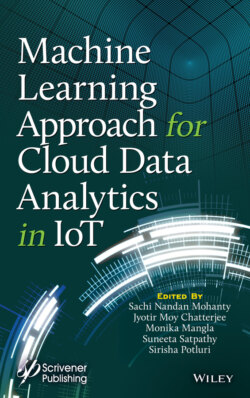Читать книгу Machine Learning Approach for Cloud Data Analytics in IoT - Группа авторов - Страница 83
3.1 Introduction
ОглавлениеIn this modern world, it is observed that the face of each business is experiencing a drastic transformation owing to huge technological advancements. Also, this technological revolution has influenced the mode of operation of the retail industry due to the change in the shopping behavior of customers. As a result, customers have shifted from conventional in-store shopping to shopping through online platforms, mobile channels, or even through machine-to-machine (M2M) commerce during the past few decades. The prime technologies which have propelled this business transformation are recent emergence in artificial intelligence (AI), big data, blockchain technologies, and the Internet of Things (IoT) [1, 2]. For instance, big business groups like Amazon and Flipkart have established a cut-throat competition to lure customers in the retail industry employing advancements in data analytics. Retail organizations have also been formulating different business and marketing strategies to garner the largest share of customers. Retail industries have been employing data analytics capabilities to better understand their customers in terms of choice, budget, and demand, which enables them to provide efficient and dynamic customer service. The retail industries obtain this competence of providing dynamic and user-specific service by gaining detailed information about purchase, location, and social media data of its customers. Here, social media data refers to the opinions and feedback about a product, service, or organization posted by customers, helpful to other prospective customers to make an informed purchase decision. Handling such huge data consisting of purchase, location, and social media is achievable as a result of advancements in big data technology [3, 4].
Big data is an efficient technology to handle complex, unstructured, varying, and voluminous data in comparison to traditional data-processing technologies. Basically, big data is characterized by four V’s, viz., velocity, volume, variety, and veracity. Big data facilitates efficient analysis of such complex data to reveal patterns, associations, and hidden patterns. Advancement in the big data has enhanced its employment in the retail industry as it significantly aids them to frame future policies and business strategies [3]. The process of discovering meaningful and useful information in big data is referred to as big data analytics (BDA). BDA enables industries to collect and process the big data to discover insights for factbased and informed decision-making [5]. BDA has proved its potential and capability in diverse domains including retail industry. In the retail industry, BDA aims to deliver an enhanced shopping experience through recommendations, optimized operational system, and improved supply chain management (through demand forecasting). BDA can be broadly classified into three categories as shown in Figure 3.1.
Here, descriptive analytics is used to obtain summarized sales along various (region, product, etc.) dimensions [6]. Prescriptive analytics enables retailers to devise best strategies like market price in order to maximize business performance. Predictive analytics uses the historical data from past years to create empirical predictions [7]. There is sufficient number of techniques and technologies in existence to perform BDA. Some of the prominent technologies are data mining, optimization method, and machine learning (ML) [8]. The authors in this chapter primarily focus on the ML approaches employed for predictive data analytics in the retail industry. The chapter is organized as follows.
Figure 3.1 Classification of big data analytics.
Section 3.1 of the chapter briefly introduces the concept of predictive data analytics and its requirements in the retail industry. Various approaches of predictive data analytics have also been mentioned in this section. Background and related work has been elaborated in Section 3.2. The predictive data analytics in the retail industry has been discussed in Section 3.3. It also presents various models for predictive data analytics using ML. Associated challenges and use cases have also been discussed in this section. Authors attempt to propose a framework for predictive data analytics in Section 3.4. Finally, conclusion and future direction for research has been presented in Section 3.5.
